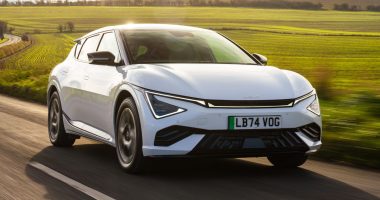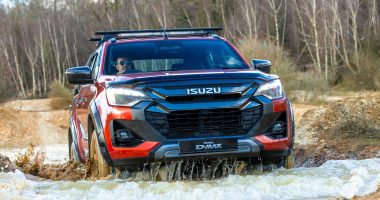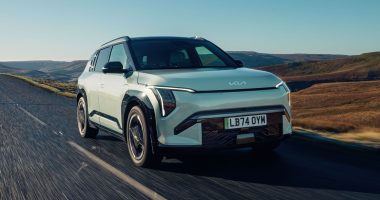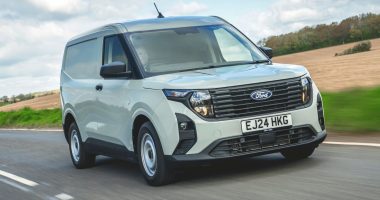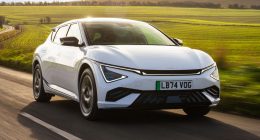The current Yaris started out life as a humble supermini before it was transformed into a homologation special hot hatch. To complete the family of small cars, Toyota has melded what it does best – making hybrids and building crossovers – to come up with the compact Yaris Cross SUV.
Table of Contents
NOT ANOTHER TOYOTA SUV
Clearly, Toyota felt it was missing a trick with the Yaris and by creating the Yaris Cross, the company now boasts having the largest hybrid-electric SUV model range on the market. This car props up the pyramid and is joined, in ascending order, by the C-HR, the RAV4 and seven-seat Highlander. It has a lot in common with the Yaris – naturally – such as styling cues, the TNGA platform on which it sits, and the drivetrain that comprises a 1.5-litre three-cylinder petrol engine linked to a CVT transmission. Apart from the obvious height advantage the Yaris Cross has over its sibling thanks to 25mm of extra ground clearance, it is taller (+95mm), wider (+20mm) and longer by a whole 240mm.
A LOOK THROUGH THE RANGE
‘Icon’, ‘Design’, ‘Excel’ and ‘Dynamic’ make up the core Yaris Cross range and, for a limited time, there is a ‘Premiere Edition’ as featured here. Starting at 16-inches and growing to 18-inches, all models wear alloy wheels that sit inside squared off wheel arches that are shieled by chunky plastic cladding. Tinted rear windows, aluminium roof rails and LED technology for the lights come on all but the most affordable trim. As part of our test car’s “enriched specification”, the ‘Brass Gold’ bodywork is complemented by a gloss black finish for the roof and mirror covers, and a discreet shark fin antenna. We were quickly won over by the car’s stylish and adventurous design; the front end has a certain Iron Man look about it in and the rear is a straight lift from the regular Yaris, albeit with the curved edges squared off just a tad.
IS THE INSIDE AS APPEALING?
Toyota reckons the Yaris Cross cabin oozes quality – but we would care to differ. Without question it will withstand the rough and tumble that comes with being a family car; our prod around confirmed everything to be tightly secured in place and well screwed together. It also revealed a sea of horribly hard plastics, each with their own texture and slight variation in colour. In this respect, the Peugeot 2008 and Skoda Kamiq are streets ahead and won’t be worried. Nor will they lose sleep over how the cabin is presented; in our eyes it is mish mash of shapes and the touchscreen appears to have been an afterthough given. We aren’t convinced by the driver binnacle, either. It houses traditional temperature and fuel dials, and a speedo modelled on an analogue set-up that Toyota has digitised with the help of low-rent graphics.
WHAT ABOUT PRACTICLITY?
The interior isn’t a knockout and practicality is not an especially strong point of the Yaris Cross, either. Depending on the model you choose to buy the rear seats are either 60/40 or 40/20/40 split-folding. The latter is useful for the simple fact it incorporates a drop-down armrest that can hold cans or water bottles, although all that separates you from the cargo area when this is lowered is a tacky plastic sheet that is as rigid as a limp lettuce leaf. Brownie marks are earned for the height adjustable floor in the 397-litre boot and, again, depending on trim, the floor boards split 60/40 to accommodate two large suitcases, for example. As for rear seat comfort, the narrow body hampers shoulder room and taller passengers will have to make do with their legs rubbing against the seat backs as the bench doesn’t offer any adjustment. Space is freed up by cubbies dotted around the cabin, except these are on the petite side – much like the glovebox, door bins and map pockets.
DOES IT POINT AND STEER WELL?
Toyota says the petrol/electric combination deliver brisk performance – but we are not so sure. In tandem with the 79bhp electric motor resting on the front axle, total power is pushed up to 114bhp. That sounds adequate but it never feels that way; a firm press of the accelerator is called for to guarantee any sort of headway and when you do hit the noisy pedal things turn, well, noisy. The petrol engine is coarse and makes its presence known even under moderate acceleration – a fact not helped by the CVT transmission. You can flick between ‘Eco’, ‘Power’ and ‘EV’, the third option being good enough to zip through town traffic and down side streets under the 79bhp e-motor’s own steam until the small onboard battery is emptied. Outside this, the car’s ECU defaults to hybrid for petrol-only, electric-only or a combination of both power sources. A hard ride leads to a fair amount of pitter-patter on B-roads and the stiff suspension thumps in and out of crevices. That said, the steering is nicely weighted and the body reacts positively to directional changes.
PROS AND CONS
+ Eye-catching design
+ Economical to run
+ Versatile boot
– Petrol is noisy
– Interior quality is so-so
– Firm ride hurts comfort
INFOTAINMENT: The 9-inch touchscreen on Premiere Edition cars has a user-friendly quality to it and combines touch inputs with a stack of four physical shortcuts down the frame’s left-hand side. The fallback system can be bypassed as it is compatible with Android Auto and Apple CarPlay and setting this up is easy. Position-wise, the display sits at a nice height making it easy to type information into the sat-nav.

INTERIOR: The dash includes switchgear, electronic displays and touch-sensitive control systems but it isn’t the prettiest set-up in the compact SUV sector. High asking price of top-end models is off-set by a lengthy list of standard equipment that includes an auto dimming rear view mirror and dual-zone air conditioning. Limited run Premiere Edition versions add an 8-speaker stereo that is supplied by sound specialist, JBL.

STYLING: Every Yaris Cross wears alloy wheels and is identifiable by off-road inspired design touches including faux skid plates and all-round black body cladding. Aluminium roof rails are standard on all but ‘Icon’ cars, meanwhile. As for colours, customers have eight to choose from with bi-tone colours like our test car’s ‘Bass Gold’ hue an option and only available on Dynamic and Premiere Edition.
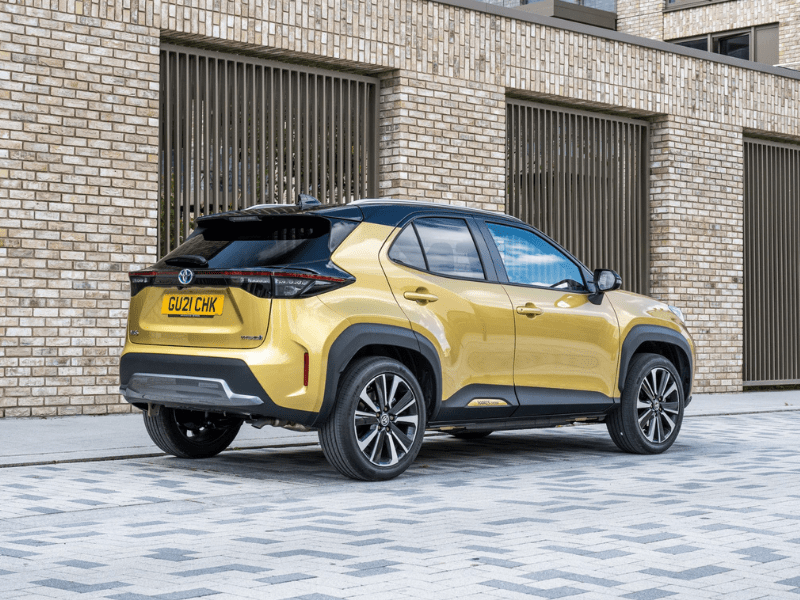
PRACTICALITY: The 397-litre boot has a wide opening and flat floor, with extra space underneath this for items such as a first aid kit. Total space does take a hit if choosing the all-wheel-drive set-up because of the extra gubbins this system introduces. In this guise, with the back chairs in their normal upright position, there is only 320-litres to play with. Leg room in the back would be helped if the bench wasn’t fixed in position.
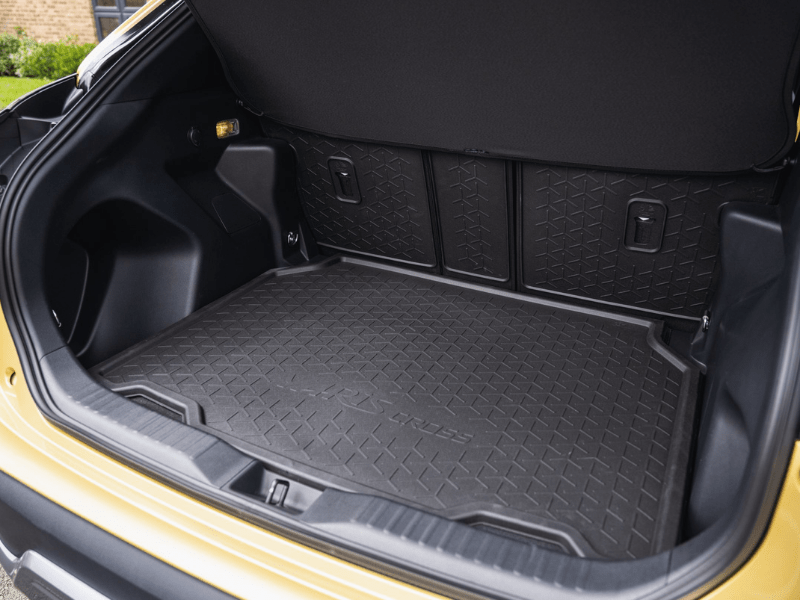
SPECIFICATION
Price: £28,185 (as tested)
Engine: 1.5-litre, 3cyl petrol hybrid
Power/torque: 114bhp/86lb ft
Transmission: CVT auto, front-wheel drive
0-62mph: 11.2 seconds
Top speed: 105mph
Economy/CO2: 57.6mpg/117g/Km


